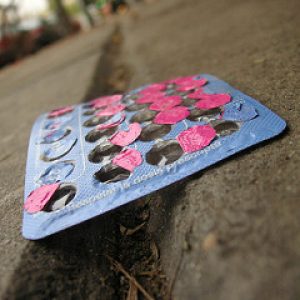
In my two previous articles, I mentioned that birth control pills can promote either hair gain or loss. They accomplish this through either suppressing hormones referred to as androgens, or by containing a hormone combination that has androgenic effects1. This makes sense as it is androgens which are suspected to induce pattern baldness in those who are genetically predisposed2. But if the hormone interactions I previously described weren’t complicated enough, there is another birth control effect which can lead to both hair gain and loss.
The addition of hormones from birth control medication has been documented to have a similar effect on hair as pregnancy in some cases3. Normal daily shedding that is part of the regular hair cycle may decrease. This can result in fuller and thicker hair. Unfortunately, about 3 to 4 months after discontinuing use of the pill, similar to the postpartum period, all of the additional hair is shed3. Medically this process is referred to as delayed anagen release and is a form of telogen effluvium. It differs from pattern baldness as the shedding is temporary and hair is constantly growing back. Therefore even though the sudden hair loss may seem alarming at the time, everything should return to normal.
Overall, hormones are complicated beasts which can have many effects on the body. Even just considering hair, there are diverse possibilities. It is also possible to experience multiple effects such as both shedding and pattern hair loss. Therefore it is important to understand potential side effects when deciding on birth control options with your doctor. Moreover if you notice an increase in hair loss, thinning of your hair, or similar symptoms, especially around the time of starting or stopping a new birth control pill, see your doctor or dermatologist to assess your individual situation.
Article by: Dr. J.L Carviel, PhD, Mediprobe Research Inc.
References
- Schindler AE. Antiandrogenic progestins for treatment of signs of androgenisation and hormonal contraception. Eur J Obstet Gynecol Reprod Biol. 2004 Feb 10;112(2):136–41.
- Crabtree JS, Kilbourne EJ, Peano BJ, Chippari S, Kenney T, McNally C, et al. A mouse model of androgenetic alopecia. Endocrinology. 2010 May;151(5):2373–80.
- Grover C, Khurana A. Telogen effluvium. Indian J Dermatol Venereol Leprol. 2013 Oct;79(5):591–603.












